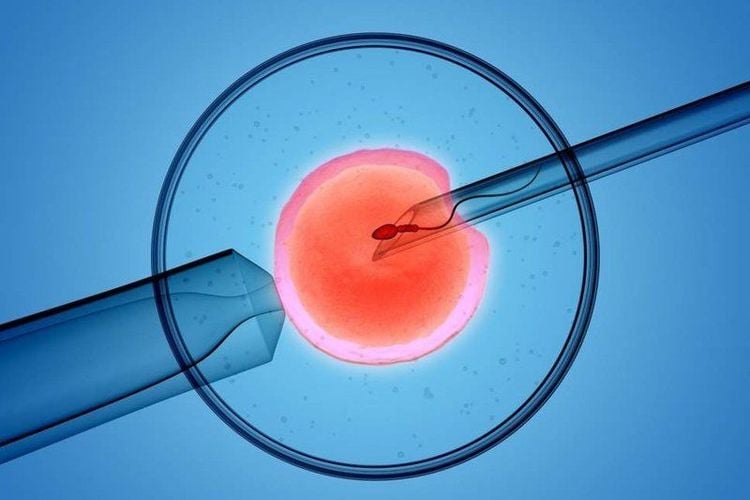This is an automatically translated article.
Umbilical cord adhesions are a rare condition of the umbilical cord that is potentially life-threatening for both mother and fetus. Therefore, in this case, the mother should be closely monitored throughout the pregnancy. However, if detected early and appropriate measures are taken, it is possible to minimize the negative effects of this abnormal situation.1. Is the umbilical cord clinging to the membrane dangerous?
Normally during a pregnancy, the fetal blood vessels running through the umbilical cord connect directly to the middle of the mother's placenta. When there is a phenomenon of umbilical cord adhesion, the fetal umbilical cord will abnormally insert into the edge of the placenta along the amniotic membrane, causing the fetal blood vessels to work without the protection of the placenta until when they connect at the umbilical cord.Umbilical cord adhesion is a dangerous pregnancy complication that accounts for about 1% of single pregnancies and 15% of twin pregnancies. This will interfere with the absorption of nutritious food for the fetus, in other words, the child can only absorb even 30% of the necessary nutrients, causing fetal malnutrition, premature birth or stillbirth. any time. The umbilical cord clinging to the membrane is especially dangerous during the stage of labor when there are uterine contractions that can tear the amniotic membrane, cut the placenta and cut off the blood supply to the fetus, causing the fetus to suffocate and suddenly lose the fetal heart while still alive. in the womb.
In addition, abnormalities of the attachment site also increase the risk of diseases such as abruption, placenta previa, pre-eclampsia, etc. The umbilical cord is membranous with symptoms of placental 2 lobes with lobes. If a woman is located in the lower part of the uterus, the placenta is low or placenta previa is also a warning sign for blood vessels to create severe consequences for the fetus, increasing the risk of death for the fetus or newborn.

Dây rốn bám màng là tình trạng bất thường về dây rốn khá hiếm gặp có khả năng gây nguy hiểm cho tính mạng của cả mẹ và thai nhi
2. How is the umbilical cord attached to the membrane?
Detecting the umbilical cord attached to the membrane as soon as possible will help doctors be proactive and timely in planning appropriate pregnancy monitoring plans and preparing emergency handling situations in an emergency situation. A umbilical cord adhesion can be diagnosed based on ultrasound images of the placenta and umbilical cord during the second and third trimesters. Ideally, pregnant women should be checked more often because the risk of a placental abruption can occur as soon as a woman has her first contractions.When the pregnant woman has signs of labor, as evidenced by uterine contractions, the cesarean section is the most important. The reason is that at this time, the placenta can break, causing bleeding in the amniotic cavity, the fetus can be life-threatening in just a few minutes, so delayed handling can also lead to unfortunate death. . Some subjects at risk for umbilical cord adhesions include:
Pregnant women with placenta previa or varicose veins have a higher risk of having placenta previa than normal Cases Twins who share the same chorion are also at increased risk for this disease In vitro fertilization Older pregnancy

Thai phụ thụ tinh trong ống nghiệm dễ gặp tình trạng dây rốn bám màng
3. Complications that occur after the umbilical cord adheres to the membrane
Complications due to umbilical cord adhesions are quite rare, but when they occur, they will leave extremely dangerous complications, which can be mentioned as:Compression or rupture of cord blood vessels: especially easy to appear when these vessels are located close to the umbilical cord. cervical C-section Cesarean section Bleeding during labor Currently, there are no measures to prevent umbilical cord adhesion because the pathogenesis of the disease during fetal development is unknown. What pregnant women can do is detect the disease as soon as possible through periodic antenatal check-ups and fetal ultrasound for timely monitoring.
Department of Obstetrics and Gynecology - Vinmec International General Hospital has solved many difficult cases such as: polyhydramnios, placenta accreta, knotted umbilical cord, preterm pregnancy, amniotic fluid transmission for pregnant women who lack amniotic fluid, etc. To make pregnancy more convenient, Vinmec has implemented PACKAGE Maternity packages, including prenatal, intrapartum and postpartum care services. Pregnant women are monitored and carried out all necessary tests and ultrasounds to detect pregnancy abnormalities early. Giving birth will be as "light" as going on vacation, because the hospital has full equipment for mother and baby.
Please dial HOTLINE for more information or register for an appointment HERE. Download MyVinmec app to make appointments faster and to manage your bookings easily.













